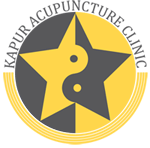Acupuncture is derived from Latin words ‘acus’ and ‘puncture’, where acus means ‘ needle’ and puncture means ‘ to penetrate’.
The response of a patient to acupuncture is dependent on the severity of the illness and the length of time the patient has suffered from it. Other important factors are general health, constitutional type, emotional balance, diet, lifestyle, and any medication the patient has received in the past or is receiving at the time of consultation.
Acupuncture’s effectiveness depends on its ability to improve the flow of Qi ( the life-force, vitality, or energy that keeps us alive) in the body. If iqi is blocked, progress will be slow. In conditions of qi depletion, the patient’s constitution must be built up first for acupuncture to have an effect. A patient’s refusal to make recommended changes in diet or lifestyle may reduce the treatment’s effectiveness. In a patient receiving allopathic medication, especially on a long-term basis, acupuncture treatment is takes some time to be effective.
It is difficult to generalize about how quickly or slowly acupuncture will work. The response varies from individual to individual. For example those with good general vitality often respond fast, but older people and those with depleted Qi may expect slower results. The duration & frequency of treatment is decided by the duration of illness. The less chronic an illness, lesser are the number of treatments required.
Acupuncture cures many diseases like bronchial asthma, cervical spondylosis, low backache, acne, frozen shoulder, etc. However, in some diseases like rheumatoid arthritis, anxiety neurosis, prolapsed disc, etc., it provides symptomatic relief and the patient has to take treatment at regular intervals to achieve adequate relief.
It is generally effective as a single mode of treatment. However, in some diseases, it is used as a supplementary therapy.
It does not alter the effect of any other simultaneous treatment.
Chinese Pulse Diagnosis is considered to be the most accurate way to detect patterns of ill health by reading subtle signs of distress within the body. The art of pulse diagnosis involves interpreting the flow of blood through the radial artery at the wrists. In the hands of an expert practitioner, the pulse can reveal many of these common health concerns.
Yes, it has been given formal scientific recognition by WHO. In countries like Sri Lanka, Australia, U.K. and U.S.A., the government has acupuncture councils. The West Bengal government has already recognized acupuncture in their state. Research projects on Acupuncture have been financed by the Indian Council of Medical Research ( ICMR) and the Centre for Scientific and Industrial Research ( CSIR) at the Ranjit Memorial Acupuncture Hospital, Howrah, West Bengal India. In November, 2003, the Ministry of Health and Family Welfare recognised acupuncture as a ‘Mode of Therapy’ to be practised only by registered medical practitioners.
The cost of acupuncture treatment can vary from Rs. 1500 to 2500 per treatment session.
Acupuncture does not have any side-effects.
Prior to their first treatment, many people do not believe that acupuncture can be painless. Different sensations such as warmth or pressure may be felt, but the energetic sensation differs from pain. People often comment that the feeling is unfamiliar but pleasant and relaxing. Acupuncture needles are very fine, about the size of a thick hair. They are solid and nothing is injected through them. Over the centuries, refined needle insertion techniques have been developed which enable the skilled acupuncturist to place a needle with little or no pain.
We use disposable acupuncture needles only.
Acupuncture can spot the start of trouble before the acute phase begins by identifying the tendencies that could develop into illness. Treatment at this stage, along with appropriate changes in diet & lifestyle, ensures the prevention of the disease.
Apart from limitations in the practitioner’s knowledge and skill, and in a patient’s willingness to heed advice, the most significant practical restriction is the need for a practitioner to be present for treatment to be given. In ‘ emergency’, patient needing life-saving resuscitation or surgery or suffering from a serious infection, any life threatening condition, or a mechanical problem must be immediately directed to the nearest hospital. In such conditions, acupuncture would normally be a useful supplement in improving the final outcome of the sickness, and curing the residual/chronic component of the sickness.

